Sustainability has been long rooted in our family and thus naturally infused itself into the Hafner Vineyard culture and its business practices here in Sonoma County's Alexander Valley. We take a holistic approach to sustainability considering many different branches – the land, vineyard, winery, team, patrons and overall health of the business. For us, being sustainable isn’t about “checking the boxes”, it’s a mentality that’s deeply rooted here. That started Day One with the goal of making high quality wine at a fair price. (Read about our pricing strategy.) Sustainability is a team effort and everyone’s ideas have made a difference helping us be more and more green. We take this approach because it’s the right thing to do. We want to preserve this land and this business for future generations while also ensuring that the families of employees are nurtured through their generations. We are “certified sustainable” through the California Sustainable Winegrowing Alliance. Read about our Certified California Sustainable Winegrowing experience. We are received our Climate Adaptation Certification through CA Land Stewardship Institute.
Below we invite you to read more about each branch of sustainability at Hafner Vineyard. To dive deeper into specific practices, check out the “Sustainability” category on our blog.
Land
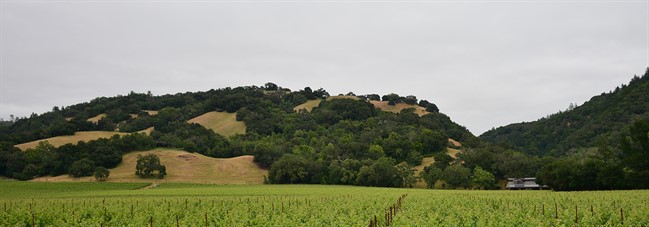
First and foremost, we see ourselves as stewards of the land. We are on this planet for a very short time in comparison to the land, so we believe it is our responsibility to care for it and preserve it for future generations. While we have 96 acres of vineyards, we have over 150 acres of rolling hill oak woodlands (over half of our property) that we leave for the wildlife. These oak woodlands act as a carbon sink, making us net negative. (See some photos from our game camera.) We have cows who nibble tall grasses, helping to protect against fires. The oak woodlands create habitats for our native flora and fauna. Sausal Creek hugs the edge of our property line and serves as a watering hole for animals and insects alike as well as being home for fish. We’ve planted native willows along its banks to help create more shade and habitat for the fish. (We are Fish Friendly Certified.) We also have done natural beekeeping here on the ranch.
Vineyard
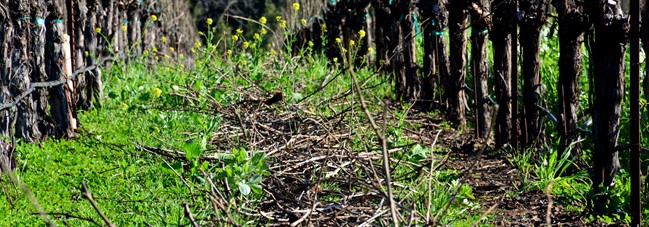
In the vineyard, our goal is to grow the best grapes that we can while conserving and strengthening the soil. We combine organic, sustainable and conventional practices. Cane clippings from pruning (as seen above) are placed in every other row and later tilled into the soil adding substance and structure. Planted cover crop delivers nitrogen to the soil while also creating a sturdy base to prevent erosion or compaction from the tractors. We use two under-the-vine cultivators (a Sunflower and a Clemens) for weed control in lieu of herbicides. Since these machines aren’t able to get perfectly around the vine’s trunk, the vineyard team walks the 96 acres and shovels out any resilient weeds. A wildflower mix is planted in every sixth row attracting beneficial insects to combat harmful insects. We use drip irrigation to focus the water use from our well. Utilizing “normalized difference vegetation index” (NDVI) technology, a drone flies above the ranch weekly during the growing season, capturing NDVI photos to monitor the vines’ growth. This allows Vineyard Manager David to strategically irrigate vineyard blocks and take proactive measures to more effectively use water. A biodiesel/diesel mix is used in all our tractors to reduce our carbon footprint. We harvest by machine which decreases labor costs, so we do not need to hire seasonal help.
Winery
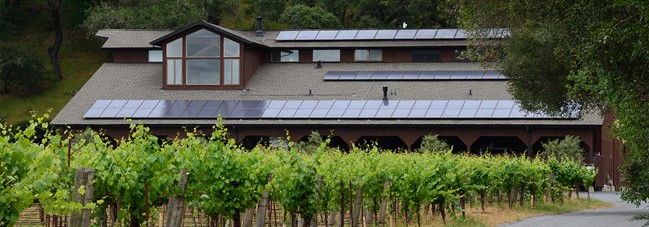
Our winemaking style is traditional, often referred to as “Old World” and is inspired by Winemaker Parke Hafner’s time in Burgundy. We focus on elegance, finesse and balance, not on richness and power. This is achieved through careful and strategic winemaking. Although new technology can be intriguing, Parke is thoughtful about purchases. He balances exciting innovations with the ability to use and maintain equipment from our very first vintage in 1982. When we built the winery, conservation was front of mind. One example is the use of night air. A large fan, triggered by the outdoor temperature, opens in the evenings and pulls in cool air to chill the winery. This technology is now becoming popular at other facilities. While heavy wine bottles can be perceived as more prestigious, Parke has always selected lighter weight bottles to cut down on materials needed to produce the bottle and added fuel to transport our over 30,000 packages annually. The bottling process is zero waste – all is recycled or reused. In 1994, we built caves that are 5,000 square feet. They are the most sustainable building we have – no heating or cooling, high humidity, low lighting and very little maintenance. A solar array on the winery provides over 30% of our electricity. The remaining we purchase from Sonoma Clean Power's EverGreen Program that provides 100% renewable and 100% local energy. We have two EV chargers available for use during business hours. (They were funded by the Northern Sonoma County Air Pollution Control District. We are grateful for the generosity and support with the installation.)
Team

Almost twenty families derive their livelihood from Hafner Vineyard. And most staff have been a part of the team for over two decades...some for three decades and others for four decades! All team members receive the same benefits and 401K plans. We enjoy working together with a common commitment to high quality grapes and wine from beginning to end. Respectful, lively, accountable, hands on, focused...are all accurate descriptors of the team here. We all take pride in the absence of “employee turnover” and the decades of commitment our staff has made to our wine and our patrons. Read our “Meet the Team” blog series to learn more about us.
Patrons
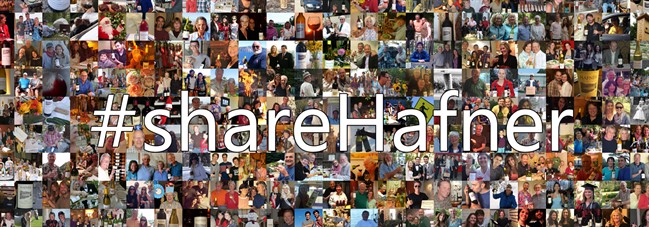
How does sustainability translate to our patrons? First off, we ship all our wine Carbon Neutral with no added cost to our patrons. More importantly though, we are honored by the longevity and loyalty of our patrons; many of whom have been Hafner aficionados for over two decades. It brings us great joy when parents pass the tradition on to their adult children (and adult grandchildren!). The Next Gen Party is a gathering that highlights this. We aim to provide quality wine, at a great value with personal service, and we believe our patrons appreciate that. We are tickled by the stories and photos we receive from patrons throughout the year. Thanks for sending them! On our blog, we share some of them along with other fun tidbits about our patrons. Browse the articles here.
Community
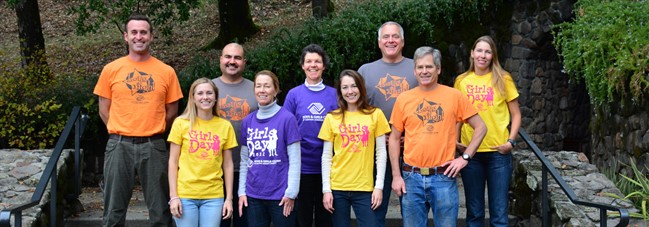
All of us at Hafner Vineyard are grateful to be members of communities: here in Alexander Valley, in Sonoma County, in the vineyard and winery, and beyond. We feel that it is our responsibility to give back to our community. That takes many different shapes. It may be volunteering together (as seen in the photo above), serving on boards, sharing our voices and opinions in the local community, supporting local, family-run businesses, donating wine to non-profits (more than 300 annually) to help them achieve their missions or planting a garden with the produce going to Farm to Pantry. We all can do our part (both big and small) to help strengthen our communities.
Business
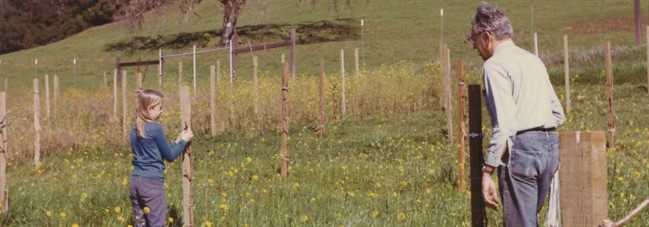
Our business philosophy stems from co-founder Dick Hafner’s experience during The Depression. We believe that small, simple, resourceful acts make a difference – from recycling and composting to shared errand trips to town to creative ways of reusing things. Dick has always been the leader on the latter front.
Since we normally sell half of our grapes, we are often asked, “Are you planning to grow your production?” Our goal is not to increase production but rather maintain our size. We believe it’s important to have a work-life balance and be able to have these rich relationships with our patrons. Any bigger and we may lose that.
We are pleased to be in our family’s third generation with the second (and third!) generations of employee families working with us. This gives us hope of sustaining the business and this land for the future generations which is what we all aim for.
To learn more about specific sustainability practices, we invite you to read our blog articles that highlight sustainable practices. If there’s something more you want to learn or have ideas for us, please email us. We’d love to hear your thoughts.





